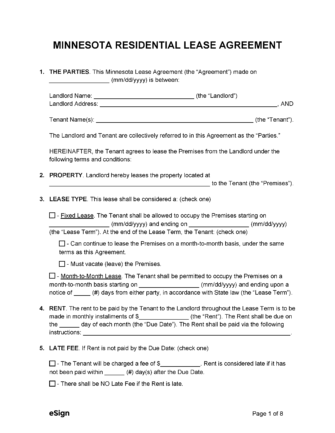Agreements: By Type (6)
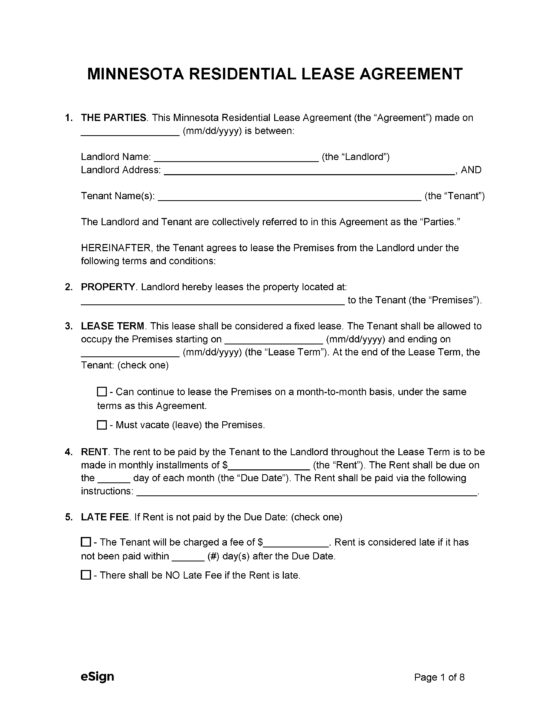 Standard (1-year) Lease Agreement – This is a fixed-term lease agreement that outlines the terms and conditions of a residential rental arrangement. Standard (1-year) Lease Agreement – This is a fixed-term lease agreement that outlines the terms and conditions of a residential rental arrangement.
Download: PDF, Word (.docx), OpenDocument |
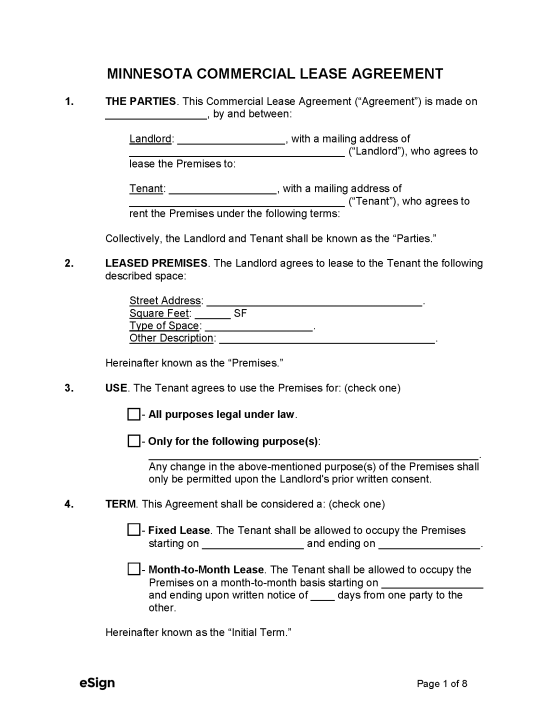 Commercial Lease Agreement – A commercial lease agreement details the relationship between a business owner and a landlord for the rental of commercial real estate. Commercial Lease Agreement – A commercial lease agreement details the relationship between a business owner and a landlord for the rental of commercial real estate.
Download: PDF, Word (.docx), OpenDocument |
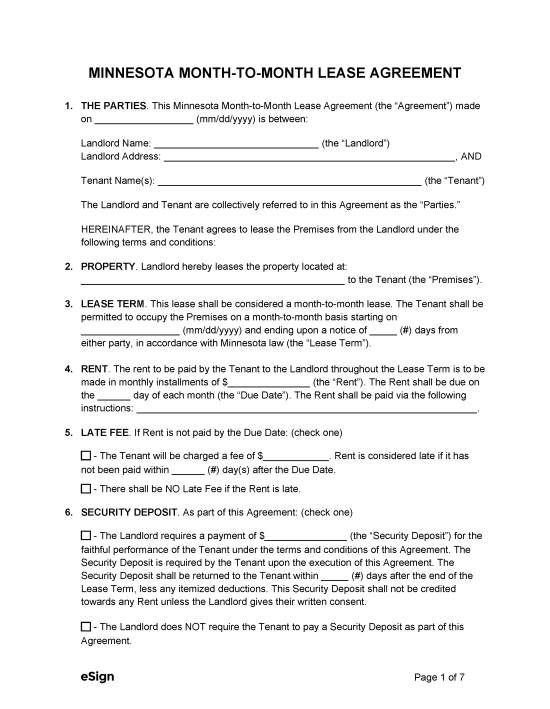 Month-to-Month Lease Agreement – Allows the lessee to renew the lease each month by paying the rent amount owed until either party ends the arrangement. Month-to-Month Lease Agreement – Allows the lessee to renew the lease each month by paying the rent amount owed until either party ends the arrangement.
Download: PDF, Word (.docx), OpenDocument |
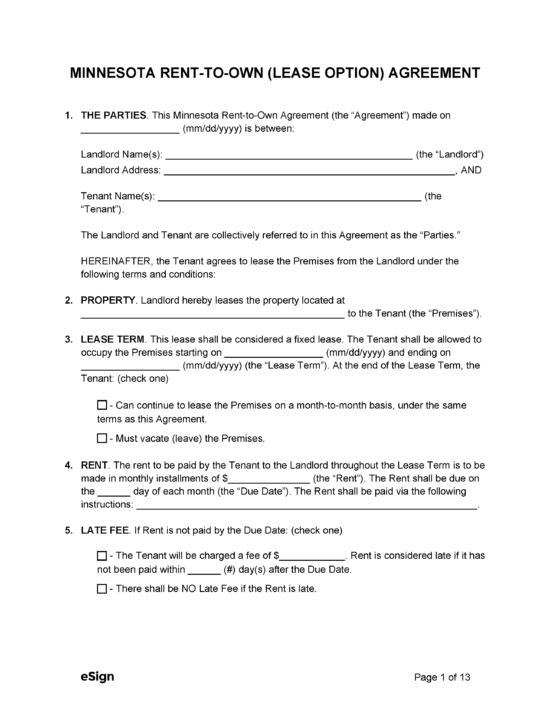 Rent-to-Own Agreement (Lease Option) – This lease enables a renter to lease a property and, if they comply with the terms and conditions of the agreement, purchase it before the lease term ends. Rent-to-Own Agreement (Lease Option) – This lease enables a renter to lease a property and, if they comply with the terms and conditions of the agreement, purchase it before the lease term ends.
Download: PDF, Word (.docx), OpenDocument |
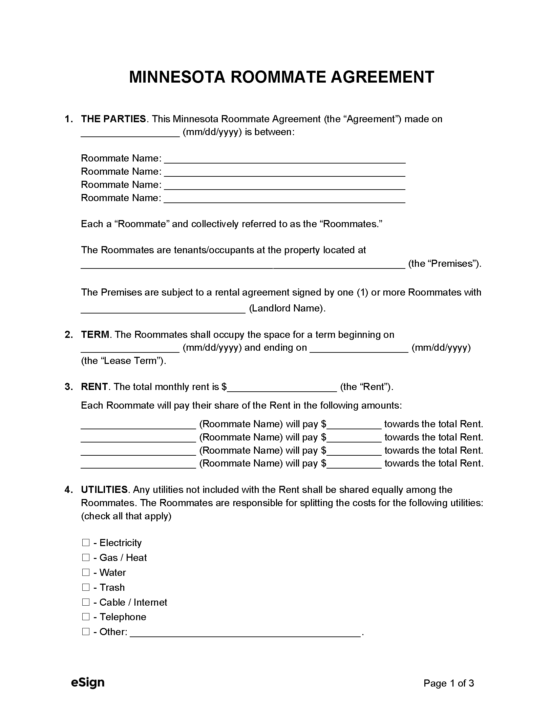 Roommate Agreement – This agreement breaks down the rights and obligations of all parties living under the same roof. Roommate Agreement – This agreement breaks down the rights and obligations of all parties living under the same roof.
Download: PDF, Word (.docx), OpenDocument |
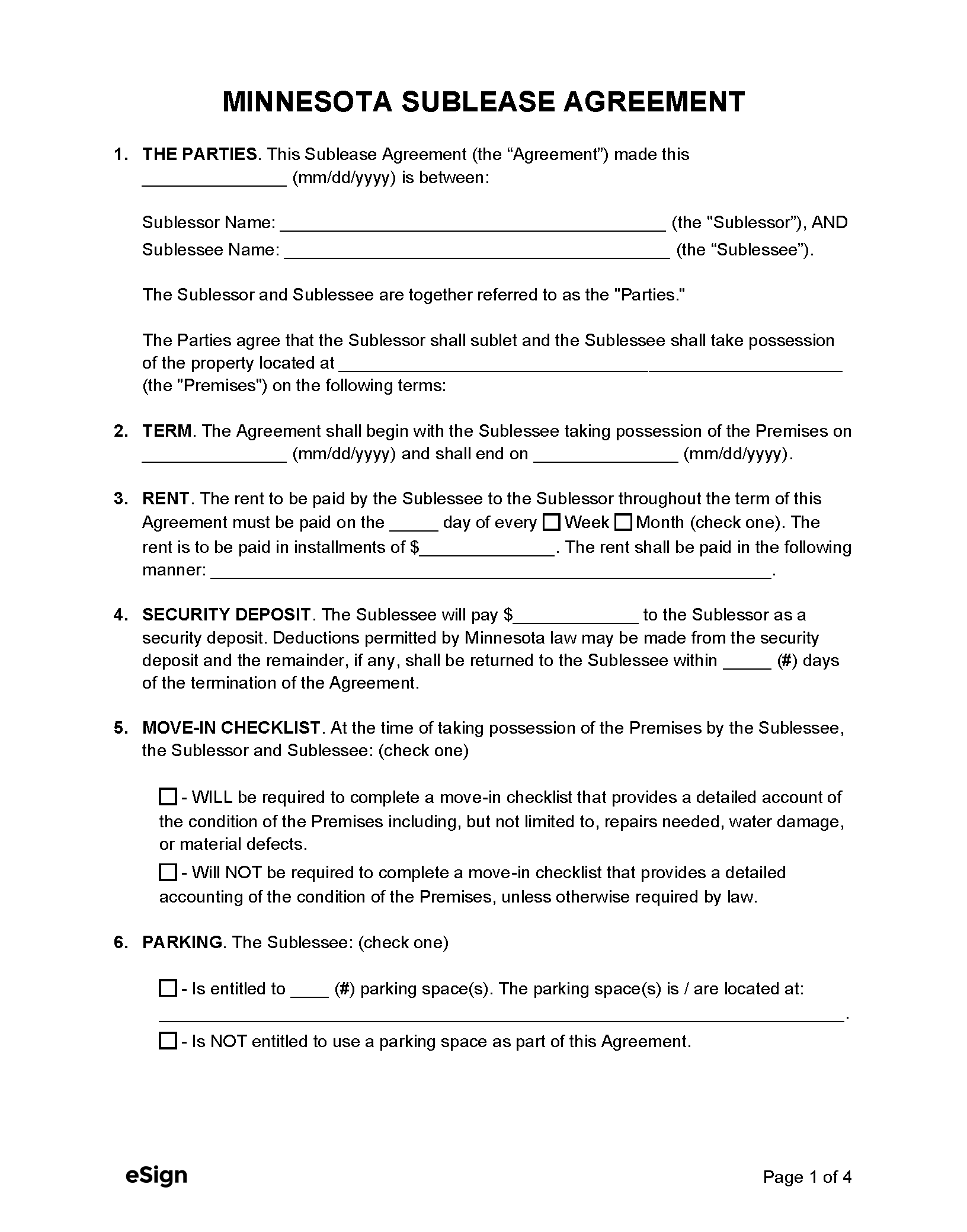 Sublease Agreement – A sublease agreement allows the tenant to rent out a portion or all of the rental space to a sublessee. Sublease Agreement – A sublease agreement allows the tenant to rent out a portion or all of the rental space to a sublessee.
Download: PDF, Word (.docx), OpenDocument |
Required Disclosures (5)
- Financial Distress – If the landlord has received a notice of a contract deed of cancellation or notice that their mortgage is being foreclosed on, they must notify a prospective tenant that they have received such a notice before entering into a lease.[1]
- Landlord/Manager Information – The tenant must be provided the name and address of the landlord, property manager, and any agent authorized to accept service of process/notices.[2]
- Lead-Based Paint Disclosure (PDF) – If a property was built before 1978, the landlord must provide this disclosure form to tenants before signing a lease.[3]
- Notice of Tenant’s Rights – The landlord must display a notice in a conspicuous place on the property that states that tenants can obtain information concerning the rights and obligations of landlords and residential tenants.[4]
- Outstanding Inspection Orders – The landlord must supply the tenant with a copy of any outstanding inspection orders for which a citation was issued if the violations threaten the health or safety of the tenant. If the violations do not affect the tenant’s health and safety, the landlord must post a notice summarizing the inspection order in a conspicuous place on the property.[5]
Security Deposits
Maximum Amount ($) – There are no statutes that limit the amount a landlord can charge for a security deposit.
Collecting Interest – The landlord is required to distribute 1% interest on the security deposit to the tenant each year.[6]
Returning to Tenant – The security deposit must be returned to the tenant within three weeks of the lease termination.[7]
Itemized List Required? – Yes, tenants must be given a written statement that relays the reasons for withholding any part of their deposit.[8]
Separate Bank Account? – No, security deposits don’t need to be kept in separate accounts.
Landlord’s Access
General Access – The landlord can access the premises only for reasonable purposes after providing 24 hours’ notice.[9]
Immediate Access – The landlord may enter the premises without warning in the case of an emergency.[10]
Rent Payments
Grace Period – Tenants are only given a grace period to pay rent if it’s written in the lease.
Maximum Late Fees ($) – The landlord may charge a late fee that doesn’t exceed 8% percent of the overdue rent payment.[11]
Bad Check (NSF) Fee – A fee of up to $30 may be charged when a tenant’s check bounces.[12]
Withholding Rent – If a landlord fails to fix damages within 14 days of receiving notice, the tenant may bring action against them, and the court may order the tenant to fix the violation and deduct the cost from the rent.[13]
Breaking a Lease
Non-Payment of Rent – In unpaid rent cases, 14 days’ notice is required to terminate a fixed-term lease.[14]
Non-Compliance – Landlords aren’t required to give notice before filing an eviction action for non-compliance.[15]
Lockouts – The tenant may hold the landlord liable for locking them out without a court order.[16]
Leaving Before the End Date – There is no mention of what a landlord can do if a tenant vacates early, but in most cases, the tenant is still liable for the remainder of the rent payment.
Lease Termination
Month-to-Month Tenancy – Landlords must give the tenant at least one month’s notice when terminating a month-to-month tenancy.[17]
Unclaimed Property – Any belongings left abandoned by the tenant may be claimed by the landlord 28 days after giving notice.[18]
Sources
-
- § 504B.151, Subd. 1
- § 504B.181, Subd. 1
- EPA/HUD Fact Sheet
- § 504B.181, Subd. 2(b), Tenant’s Rights Handbook
- § 504B.195
- § 504B.178, Subd. 2
- § 504B.178, Subd. 3(a)(1)
- § 504B.178, Subd. 3(a)
- § 504B.211, Subd. 2
- § 504B.211, Subd. 4
- § 504B.177(a)
- § 604.113 Subd. 2(a)
- § 504B.395-425(c)
- § 504B.291
- § 504B.285, Subd. 4
- § 504B.375, Subd. 1
- § 504B.135
- § 504B.271, Subd. 1
